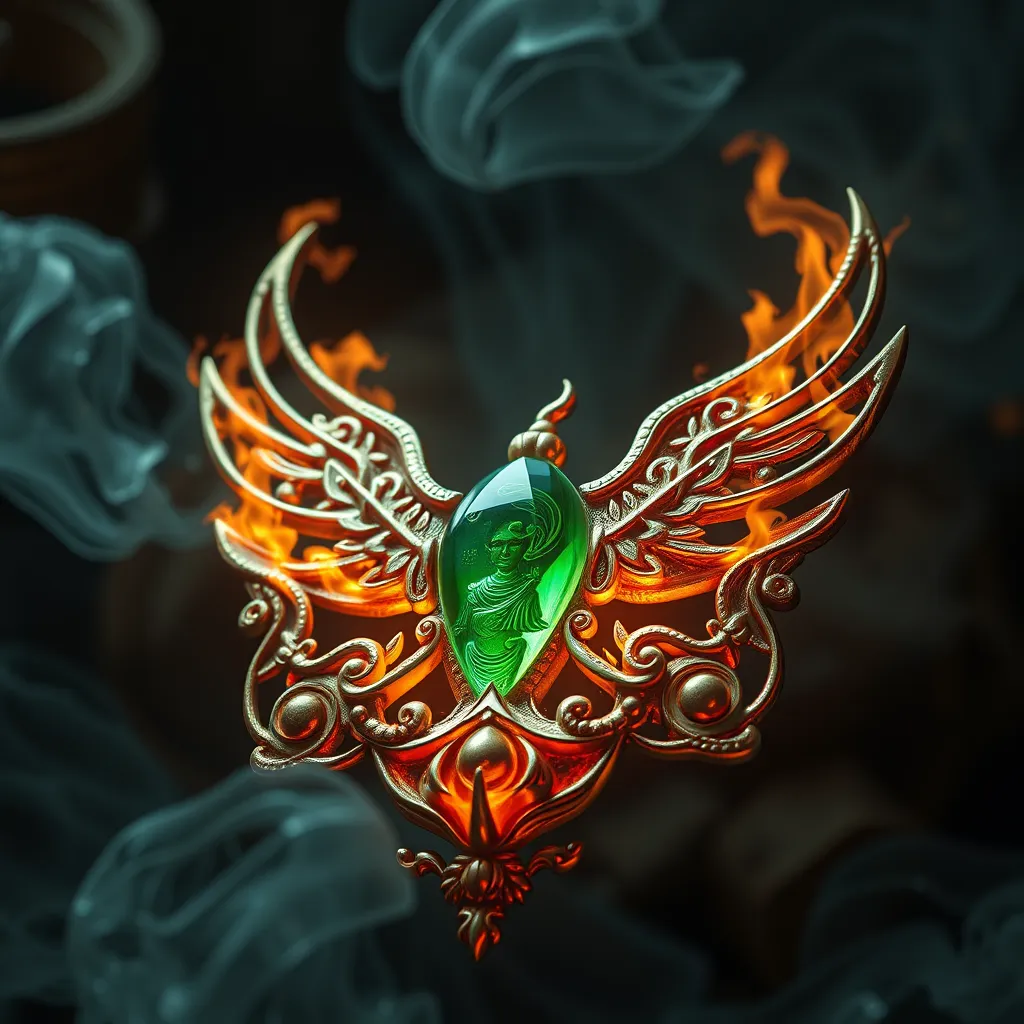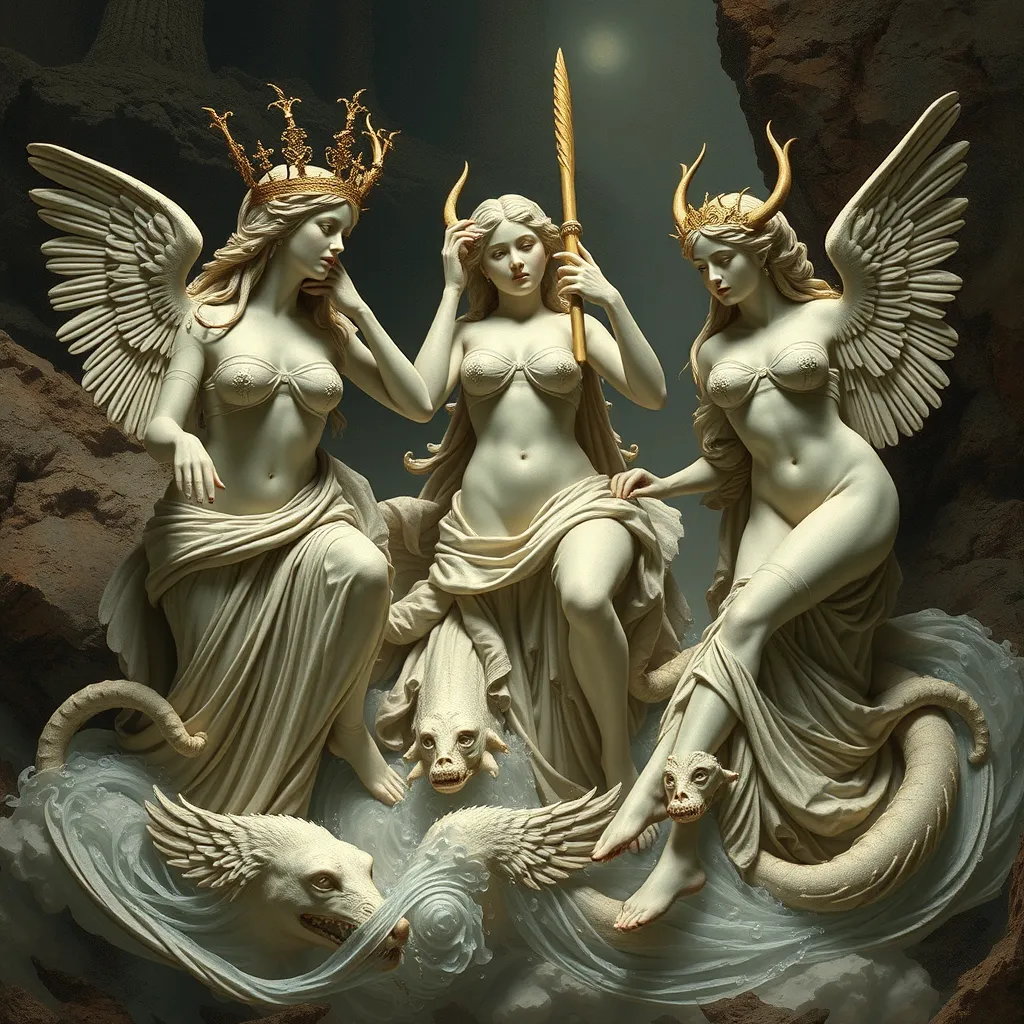Jinn and the Power of Protection: Exploring the Role of Amulets and Spells
I. Introduction
The concept of Jinn, beings created from smokeless fire, holds significant meaning across various cultural and religious contexts, particularly within Islamic theology. In these traditions, Jinn are often viewed as supernatural entities that can influence human affairs, both positively and negatively.
Protection against Jinn is a crucial concern for many individuals, as the belief in their ability to cause harm or mischief is widespread. Amulets and spells are commonly employed as tools for protection, reflecting a deep-rooted human desire for safety and security in a world filled with unseen threats.
This article aims to explore the nature of Jinn, the cultural practices surrounding protection, and the role of amulets and spells in safeguarding individuals from these enigmatic beings.
II. Understanding Jinn: Nature and Characteristics
In Islamic theology, Jinn are classified into various categories based on their nature and behavior. Some of the most commonly referenced types include:
- Marid: Often depicted as powerful and rebellious, these Jinn are known for their strength and ability to grant wishes.
- Ifrit: Typically portrayed as malevolent beings, they are associated with fire and often appear in tales as adversaries to humans.
- Ghul: These are considered shape-shifting Jinn that prey on humans, often associated with graveyards and desolate places.
Jinn possess various characteristics and abilities, including:
- Invisibility
- Shape-shifting
- Supernatural speed and strength
- Telepathy
Importantly, Jinn can be categorized as either benevolent or malevolent. Benevolent Jinn, known as Muslim Jinn, are believed to assist and protect humans, while malevolent Jinn may seek to cause harm or instill fear.
III. The Concept of Protection in Various Cultures
Throughout history, cultures have developed various methods and beliefs concerning protection against supernatural entities, including Jinn. These protective measures often stem from a desire to mitigate fear and provide reassurance in the face of the unknown.
Different cultures have unique beliefs surrounding Jinn and the methods used for protection. For instance:
- In Middle Eastern cultures, reciting specific verses from the Quran is a common practice for seeking protection.
- In African traditions, elaborate rituals and offerings to appease Jinn are often performed.
- In Southeast Asia, the use of talismans and charms is prevalent among communities that believe in Jinn.
The psychological aspect of seeking protection is also significant. The act of employing protective measures can provide individuals with a sense of control and comfort, alleviating anxiety about potential threats from Jinn or other supernatural beings.
IV. Amulets: Symbols of Protection Against Jinn
Amulets have been used across various cultures as symbols of protection. They are often inscribed with specific symbols, verses, or prayers to ward off malevolent forces, including Jinn.
There are several types of protective amulets, including:
- Islamic Talismans: Often inscribed with Quranic verses or prayers.
- Protective Charms: Made from various materials, such as metals, stones, or herbs.
- Symbolic Jewelry: Worn as personal protection against Jinn.
Culturally, amulets hold significant meaning. In many societies, they are passed down through generations and are believed to carry the protective energy of ancestors. Notable symbols and materials used in amulets include:
- The Hand of Fatima (Khamsa)
- Ayat al-Kursi (Quranic verse)
- Black tourmaline (believed to absorb negative energy)
V. Spells and Incantations: Rituals for Defense
Spells and incantations serve as another form of protection against Jinn. These rituals vary widely across cultures and often involve the recitation of specific phrases believed to invoke divine protection.
Commonly used incantations include:
- Quranic verses, such as Surah Al-Falaq and Surah An-Nas, which are recited for protection from evil forces.
- Traditional spells that may involve invoking the names of protective saints or angels.
The role of intention and belief cannot be overstated in the effectiveness of spells. The conviction that one will be protected enhances the power of the ritual, often leading to a psychological boost that helps individuals feel more secure.
VI. The Intersection of Faith and Practice
Religion plays a crucial role in shaping protective practices against Jinn. In many communities, religious leaders or shamans guide individuals on the appropriate rituals and protective measures to undertake.
Case studies reveal how certain communities have maintained traditional practices:
- In rural areas of Morocco, it is common for families to consult with a religious scholar who recommends specific amulets to ward off Jinn.
- In Indonesia, local beliefs intertwine with Islamic practices, leading to unique rituals that blend traditional and religious elements.
Personal testimonies highlight the experiences of individuals who believe they have been protected from Jinn through the use of amulets or spells, emphasizing the deep connection between faith and protective practices.
VII. Modern Interpretations and Adaptations
Modern spirituality has influenced traditional beliefs surrounding Jinn and protection. Many individuals now incorporate contemporary practices into their spiritual routines, blending ancient traditions with modern sensibilities.
Contemporary practices related to Jinn protection often include:
- Online communities sharing experiences and advice on protective methods.
- Workshops and classes on the use of amulets and spells in a modern context.
The rise of technology and social media has facilitated the spread of protective methods, allowing individuals to access a wealth of information and connect with others who share similar beliefs.
VIII. Conclusion
In summary, the exploration of Jinn, amulets, and spells reveals a rich tapestry of beliefs and practices aimed at providing protection against unseen forces. The desire for safety and security is a universal human experience, deeply embedded in cultural and religious contexts.
As we reflect on the enduring quest for protection, it is essential to respect and understand the diverse cultural beliefs that shape these practices. The intersection of faith and tradition continues to provide comfort and assurance to many, fostering a sense of connection to the spiritual world.



